13 kitchen plants that will thrive in your indoor cooking space
The best kitchen plants will bring a touch of the tropics into your cooking area, and there are plenty of options for rooms large and small

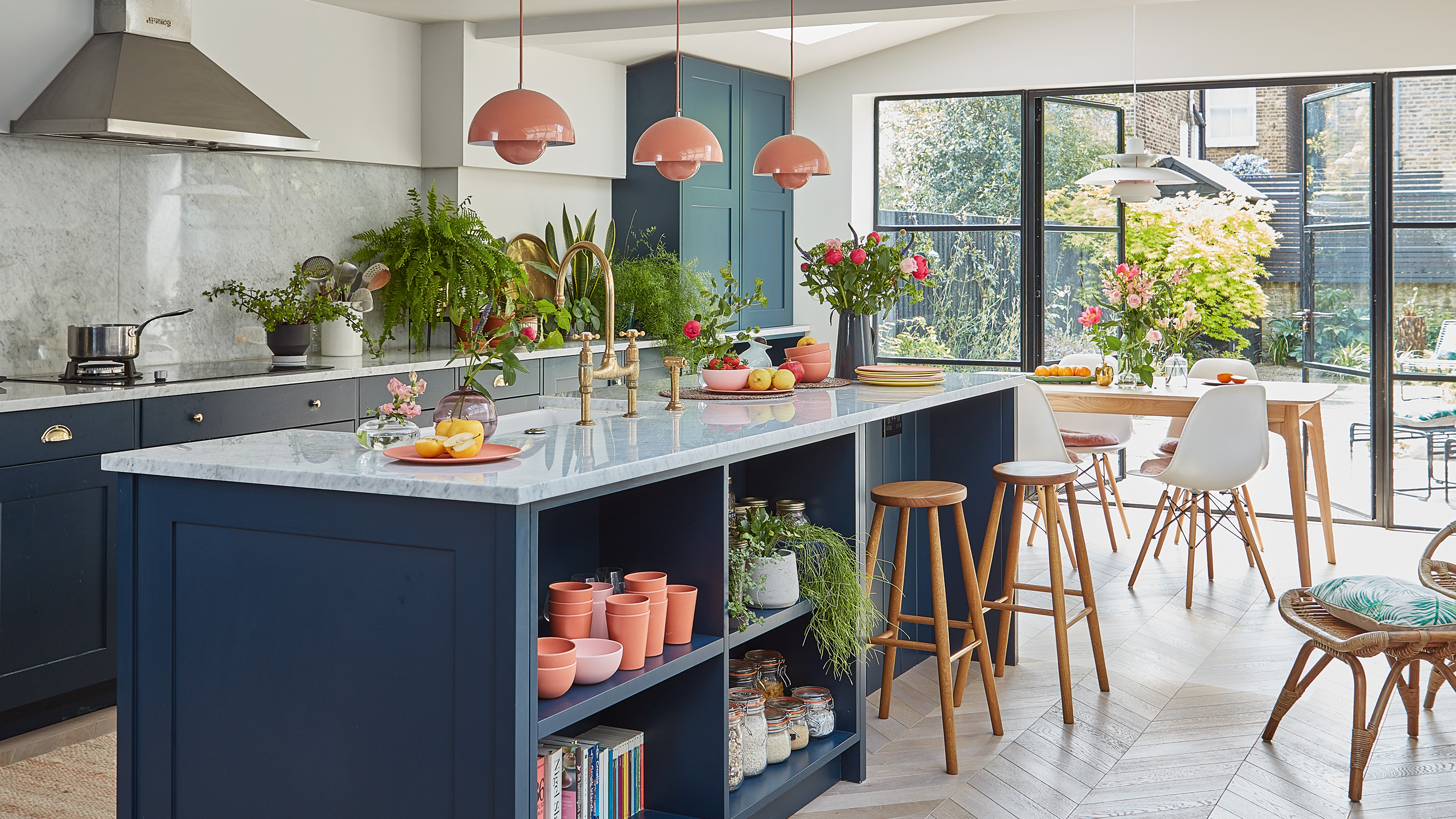
Bringing in color and interest with kitchen plants will really add to your decor. Many of the best-loved houseplants hail from warm tropical regions, and kitchens can often replicate those conditions, offering the temperatures and humidity they need to thrive.
The steamy atmosphere in a kitchen can also make caring for your plants easier, reducing the need to mist them as frequently if you turn off the extractor fan or switch it to a low setting. As well as raising humidity levels, placing jungle-style plants close to a sink can make watering more convenient, too, and you’re less likely to forget about them when they’re near the tap.
Just remember that kitchen plants which like moisture in the air tend not to thrive in soggy compost, which can quickly lead to fungal diseases and cause roots, stems and leaves to rot. To prevent this problem, plant your kitchen plants in a pot with drainage holes in the bottom and then pop them into waterproof containers, known in the trade as ‘sleeves’.
When watering your best indoor plants, take the plant out of its sleeve, water it over the sink, and leave the pot on the side to allow excess moisture to drain away before replacing it.
Introduce kitchen plants to green up your space
When choosing kitchen plants for your space, be sure to check that the light and temperature in your kitchen will suit your chosen plant, using the guides below to make your selections.
1. Moth orchid (Phalaenopsis)
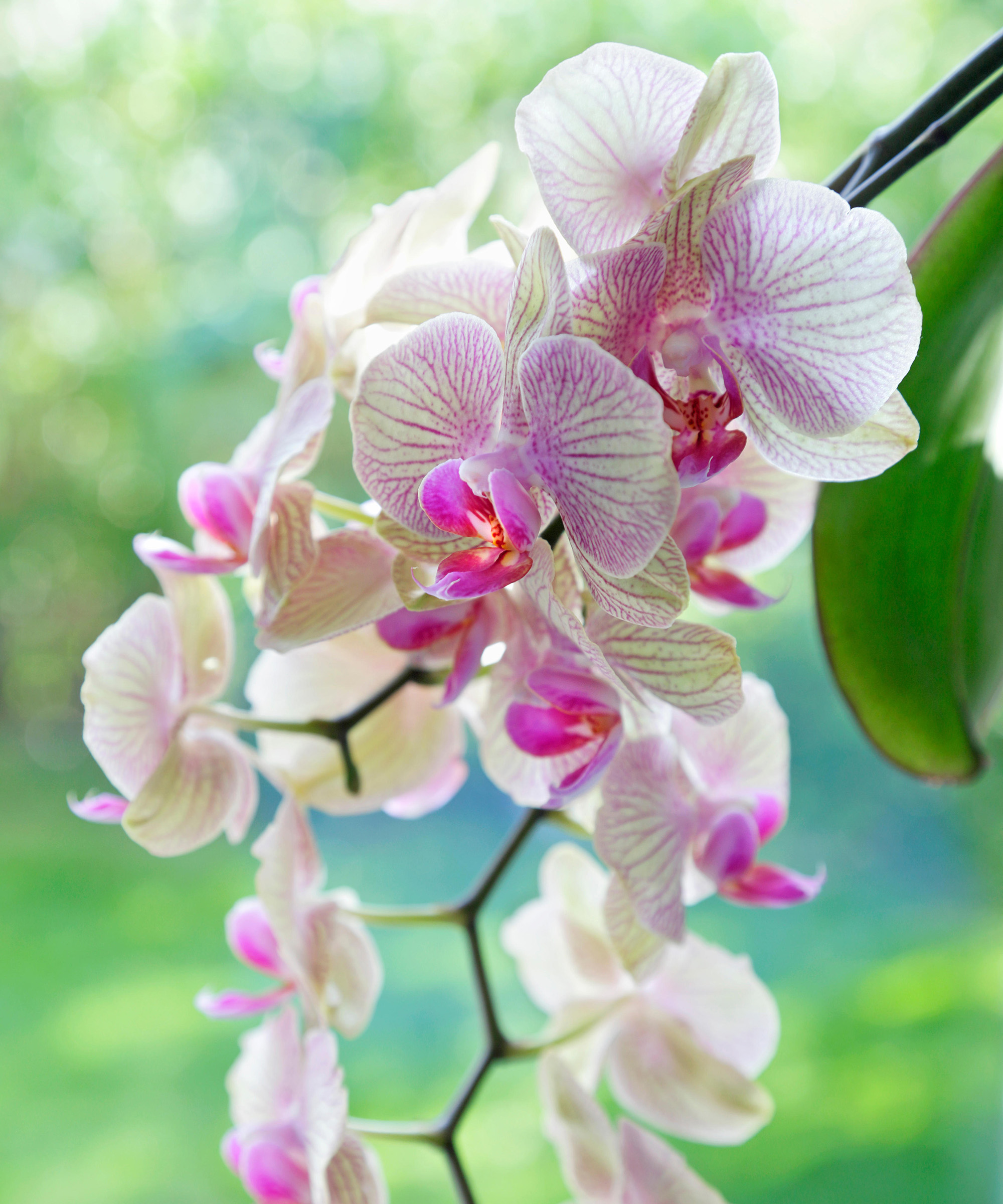
One of the easiest and most widely available orchids, this beauty loves humidity which makes it a good plant for kitchens and also one of the best plants for bathrooms. It will appreciate a spot in filtered sun or light shade.
Choose from the wide spectrum of flower colors, from white and yellow to peach and pink, and look out for the miniature hybrids if your space is limited. Moth orchids are tolerant of a wide range of temperatures and will sail through winters in a heated kitchen that cools down during the day.
Water the whole plant (remember to plant it in a pot with drainage holes) in a sink, ensuring the leaves and aerial roots are given a shower, and use distilled or rainwater in hard water areas.
Then leave it to drain fully before returning it to its waterproof pot. Reduce watering in winter, and feed with a specialist orchid fertilizer once a month from spring to summer.
2. Blue star fern (Phlebodium aureum 'Blue Star')
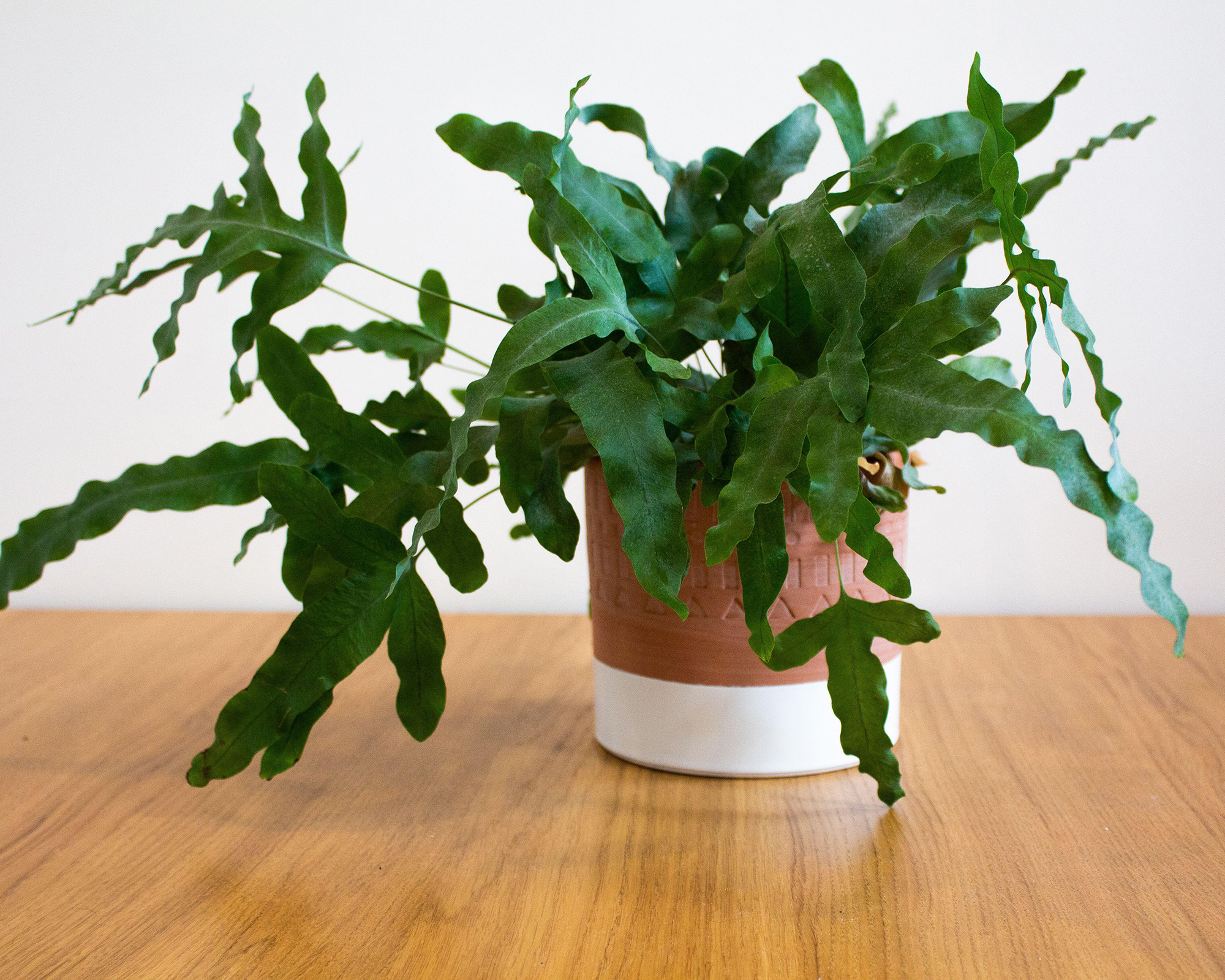
A perfect plant for beginners, this eye-catching fern produces large divided leaves that have a slightly blue sheen, hence the name, held on slim stems. It’s fairly compact and a good choice for small spaces, reaching about 2ft (60cm) when mature.
Happy in a kitchen, it will thrive in a spot out of direct sunlight or in shade, and it is also tolerant of temperature fluctuations. Keep the compost moist from spring to fall, and apply a balanced liquid fertilizer once a month during the same period. Reduce the moisture in winter, leaving the top of the compost to dry out between waterings.
3. African violet (Saintpaulia ionantha)
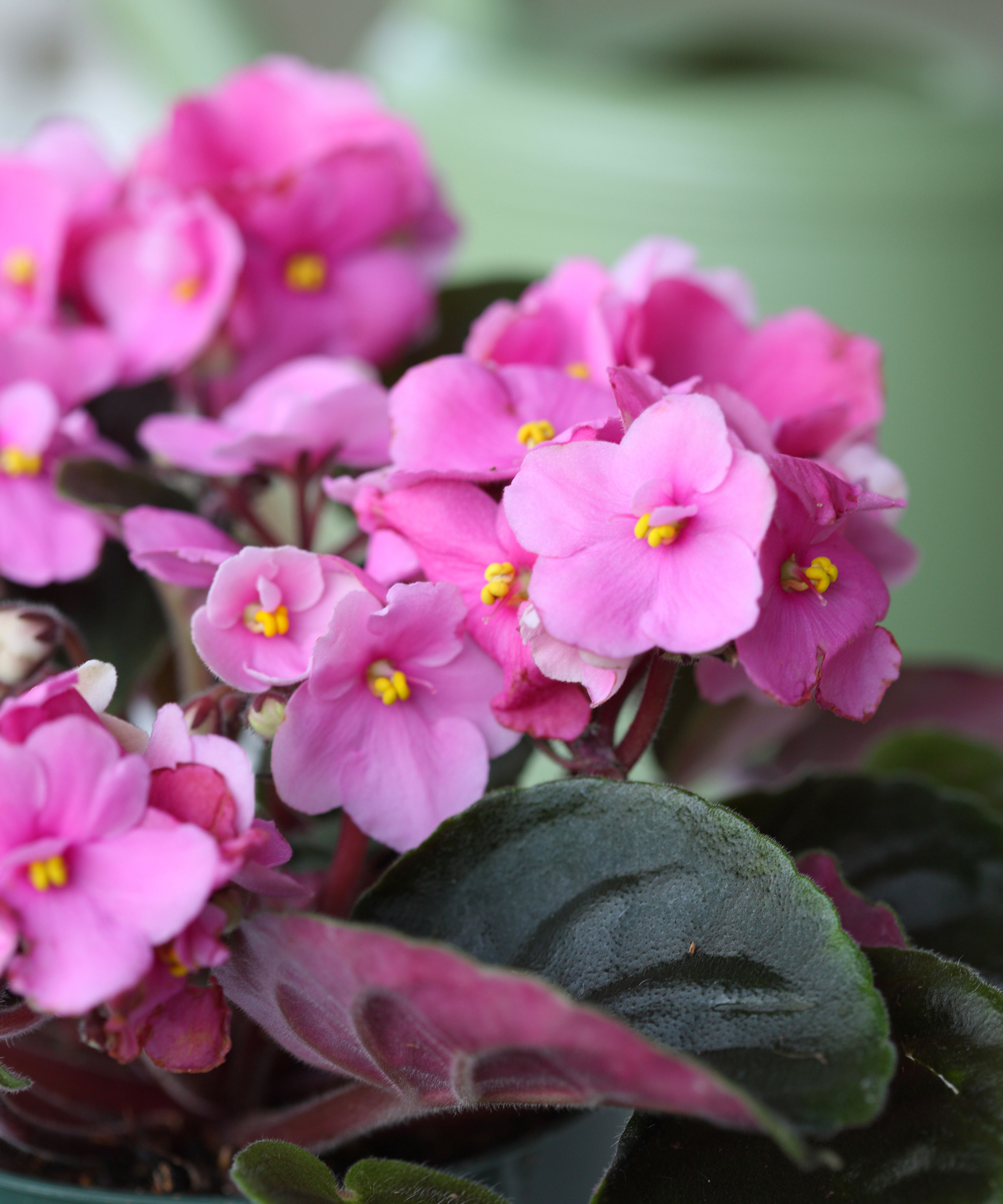
Loved for its old-fashioned charm, the diminutive African violet is a great choice if you have limited space. Enjoying a bright spot out the direct sun, the flowers can appear throughout the year, but open mostly in summer, and they come in a wide range of colors, including pink, purple, red and white. The soft round green leaves, often maroon underneath, add a decorative touch when the plant is not in bloom.
Although it's a fairly low maintenance indoor plant for kitchens, it can rot if the leaves get wet. To avoid this, ensure the plant is in a pot with drainage holes, and place it in a tray of water for about 20 minutes to soak up moisture from below. Then remove it and leave to drain for a while longer before replacing it in a waterproof pot. Allow the top of the compost to dry out between waterings over winter. Apply a balanced liquid fertilizer once a month between spring and late summer.
4. Lace fern (Asparagus setaceus)
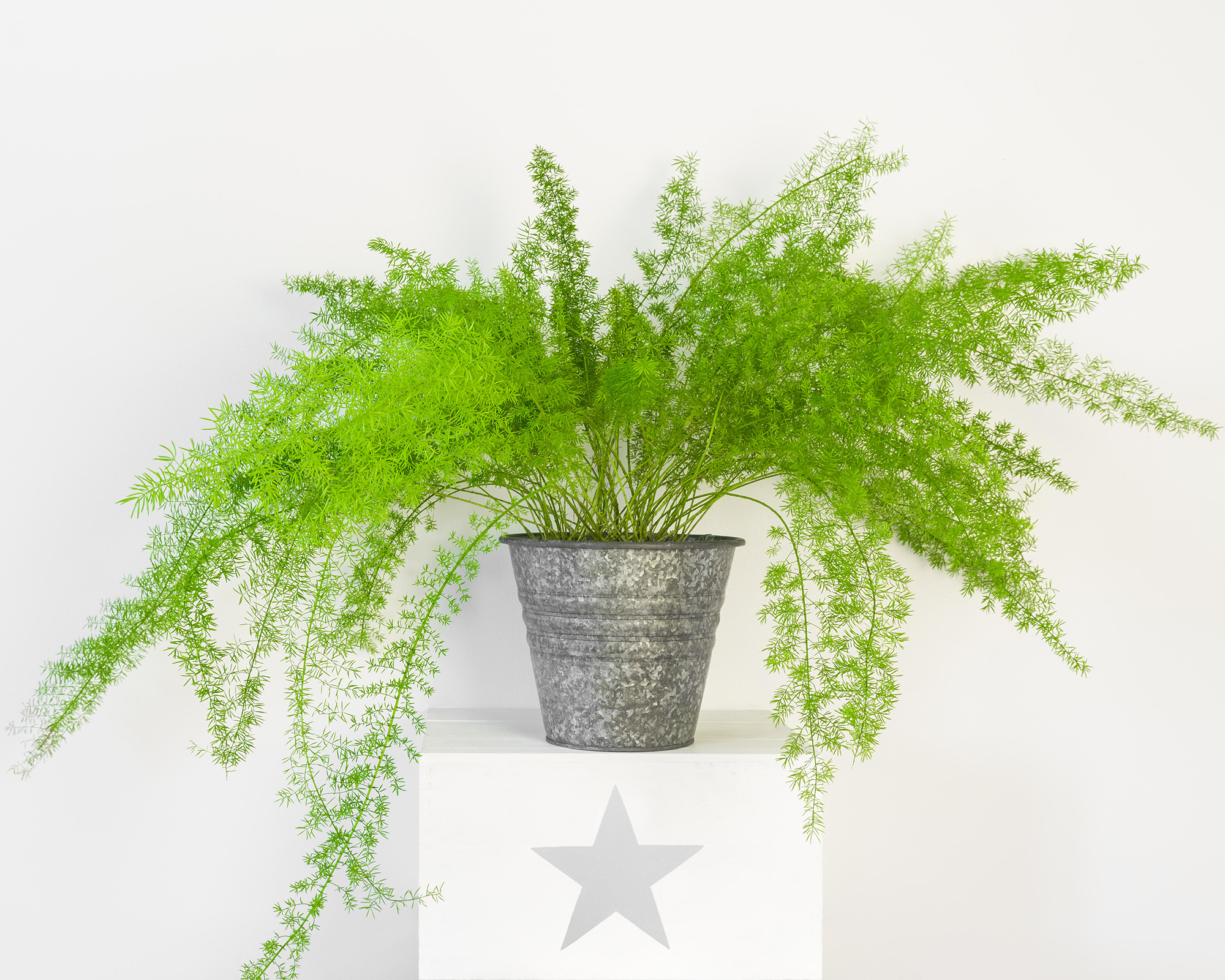
Not a true fern, the delicate-looking foliage of this member of the lily family belies its tough nature. The ideal indoor plant idea for beginners, it will sail through periods of neglect unscathed, and thrives in kitchens, where the extra humidity helps to keep its foliage in peak condition.
Place this indoor hanging plant in filtered light, out of direct sun, in a spot where the stems can trail. But remember that it also develops sharp thorns, so keep it out of reach of children and pets. You can trim back overly long shoots to keep it in check.
Ensure the compost is kept moist from spring to fall, and reduce watering in winter. Feed with a half-strength balanced liquid fertilizer once a month from spring to autumn.
5. Flamingo flower (Anthurium andraeanum)
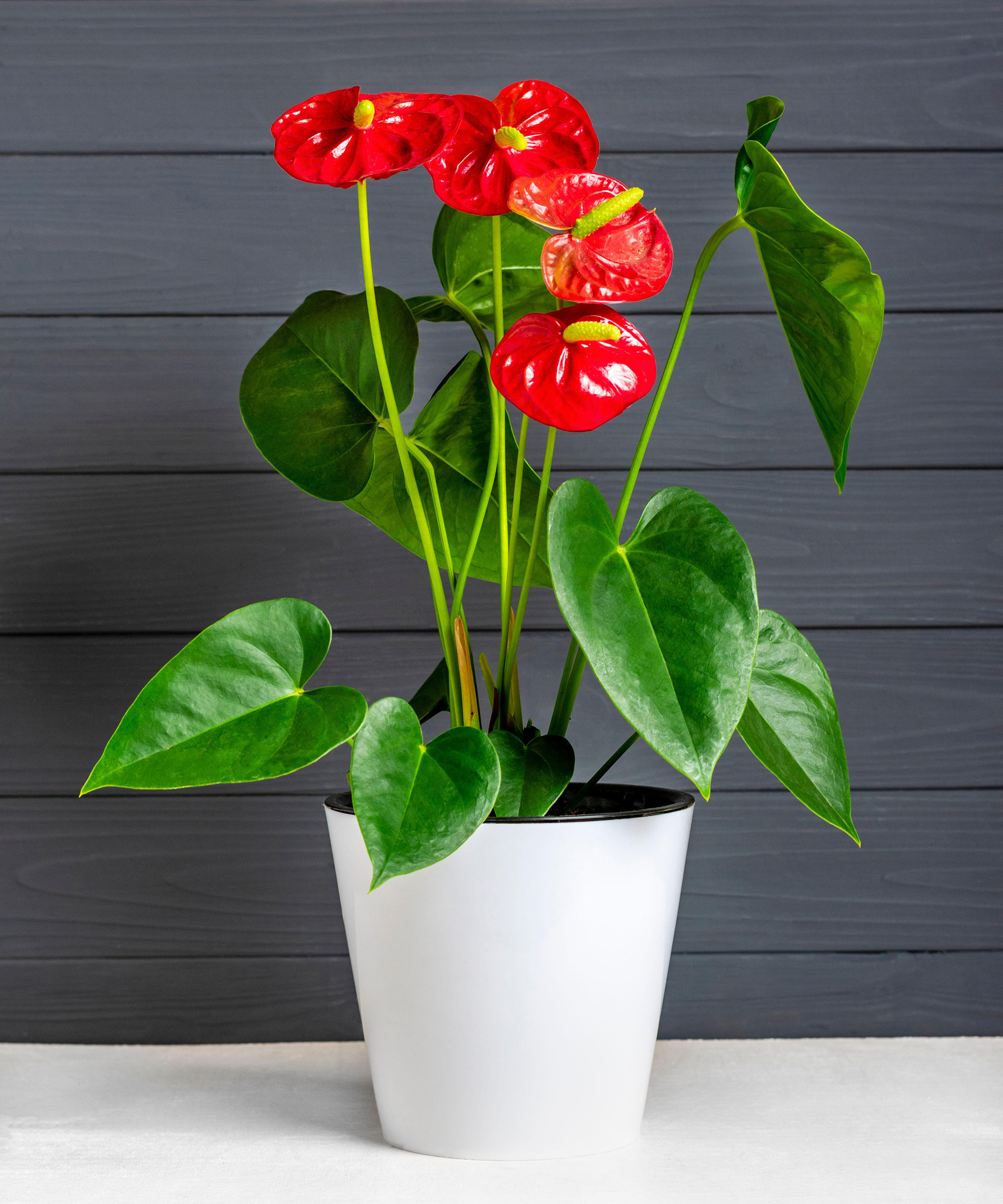
The flamingo or tail flower will pack a punch in your indoor garden ideas thanks to its dramatic heart-shaped flowerheads, which can appear throughout the year and last for many months. The blooms are held on tall stems that rise above large, dark green arrow-shaped leaves and they are made up of red, pink, burgundy or white spathes and a spike of tiny flowers known as a ‘spadix’.
Quite easy to care for, the flamingo flower will not take up too much space in a kitchen, growing to about 18x12in (45x30cm) in height and spread.
Set it in a bright spot out of direct sun in a room that’s warm all year round. Keep the compost moist and feed every fortnight from spring to summer with a half-strength high potash liquid fertilizer such as a tomato fertilizer.
6. Boston fern (Nephrolepis exaltata)
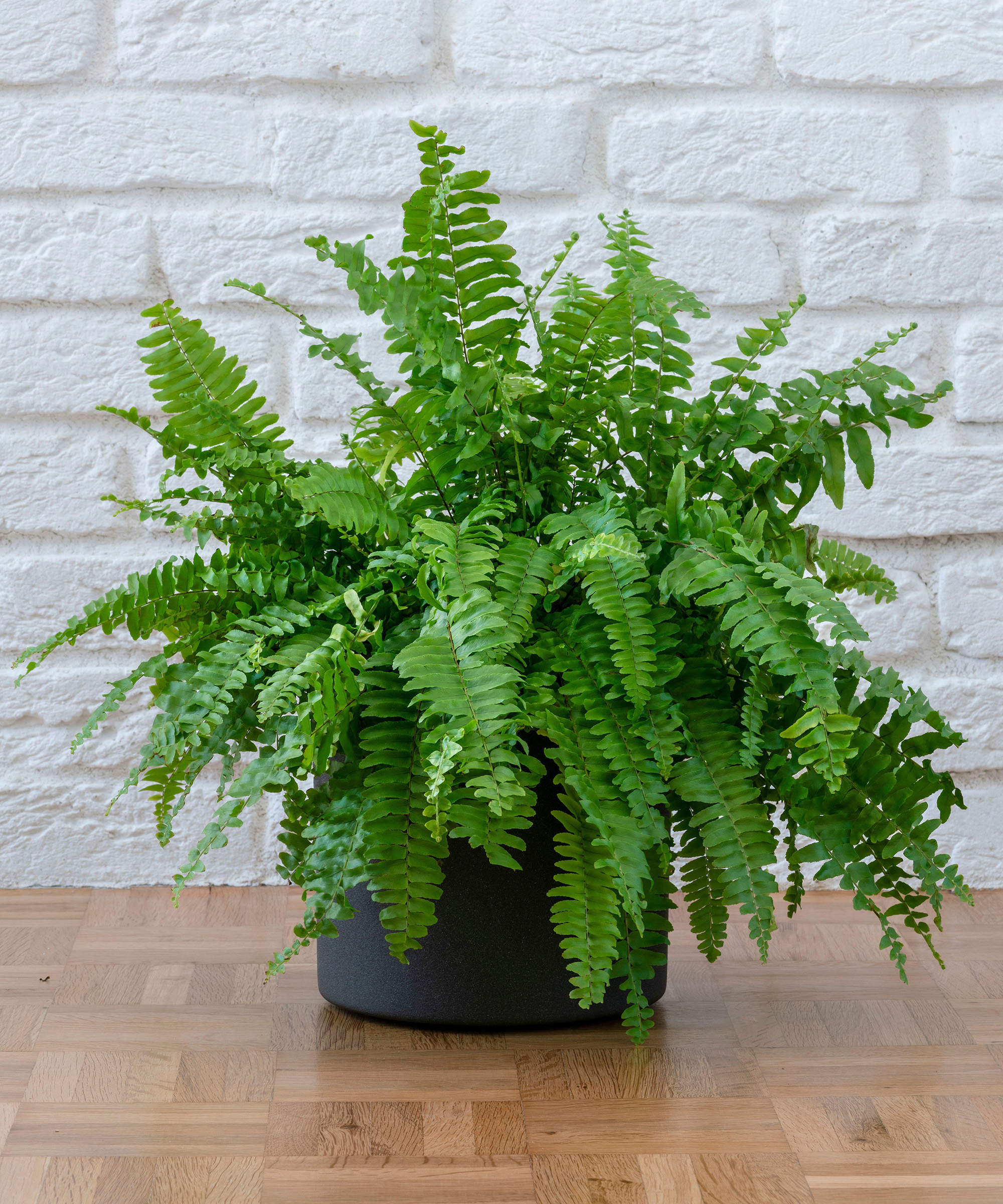
Creating a cool green fountain of arching fronds, this classic fern adds a touch of class to a hanging basket or tall plant stand in a kitchen, where the high humidity levels will help to prevent the leaf tips from drying out and turning brown.
Keep the compost moist from spring to summer, watering and leaving the plant to drain fully over a sink to prevent fungal diseases. In winter, allow the top of the compost to dry out between waterings. Feed with a balanced liquid fertilizer once a month from spring to early fall.
7. Delta maidenhair fern (Adiantum raddianum)
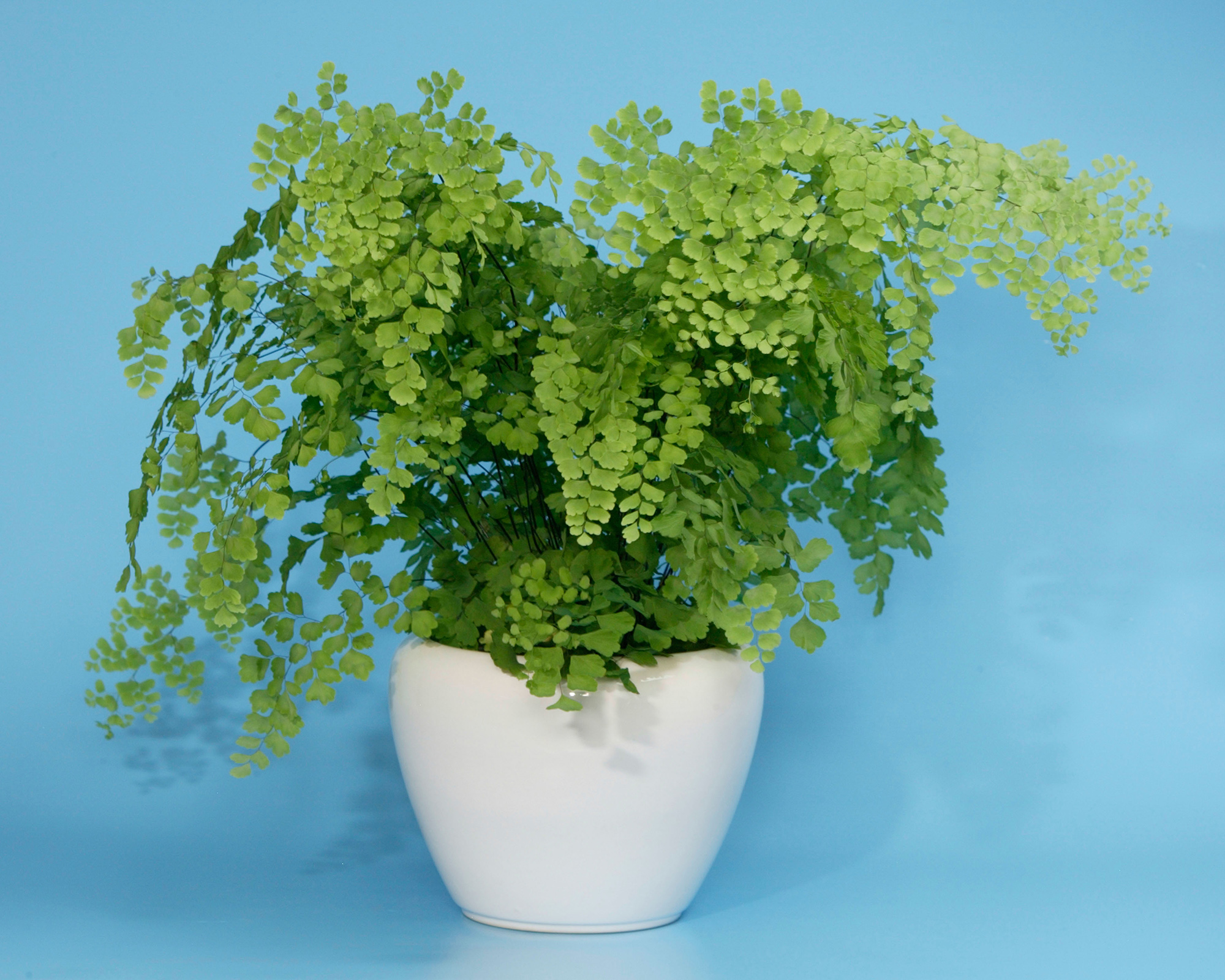
The most popular form of the delta maidenhair fern is ‘Fragrantissimum', also known as ‘Fragrans’, which produces airy fronds of dainty bright green leaves on dark stems. When learning how to grow ferns in a steamy kitchen, make sure you give them a position in filtered sun or light shade. This one grows to no more than 20in (50cm) in height and spread, making it ideal for small rooms.
Not the easiest plant to care for, it demands high humidity year-round, which may mean you have to mist the leaves every few days, even in a kitchen. Also keep the compost moist, but not wet, and reduce watering slightly in winter. Apply a balanced liquid fertilizer once a month from spring to fall.
8. Cape jasmine (Gardenia jasminoides)
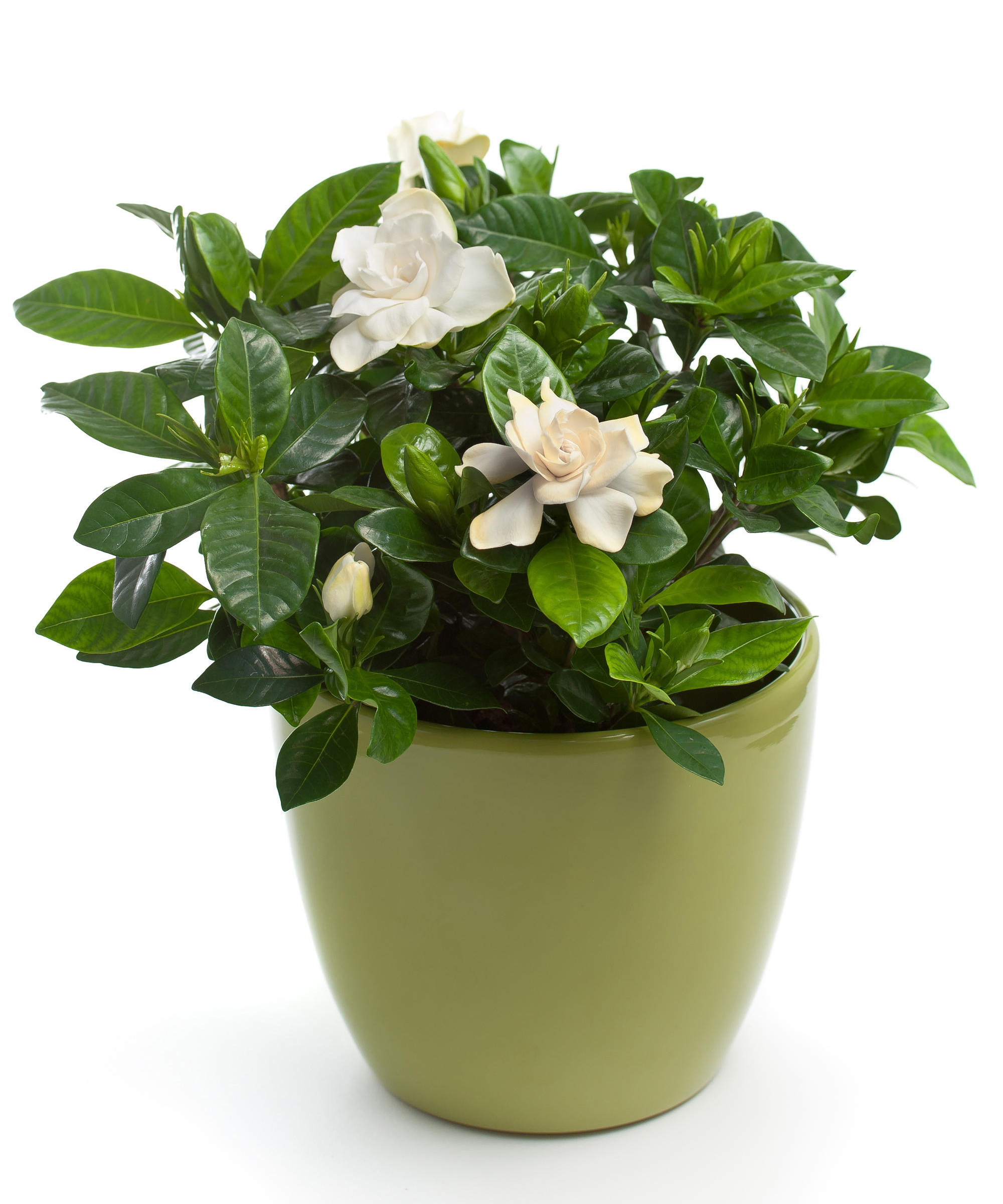
Prized for its fragrant rose-like white flowers, which emit their sweet scent especially in the evenings, this pretty little plant will bloom well in the humid atmosphere of a kitchen. Set it in a bright position out of direct sun and keep the compost moist using tepid distilled or rainwater from spring to autumn – allow the top to dry out between waterings in winter.
Like peace lily plants, cape jasmine enjoys high humidity levels so mist the glossy green leaves every few days. Gardenias are fussy about temperature, too, and need 70–75°F (21–24°C) by day and no less than 59°F (15°C) at night from summer to fall to prevent the flower buds from dropping. Apply a half-strength liquid fertilizer designed for acid-loving plants between spring and late summer.
9. Eternal flame (Geoppertia crocata ‘Tassmania’; syn. Calathea crocata ‘Tassmania’)
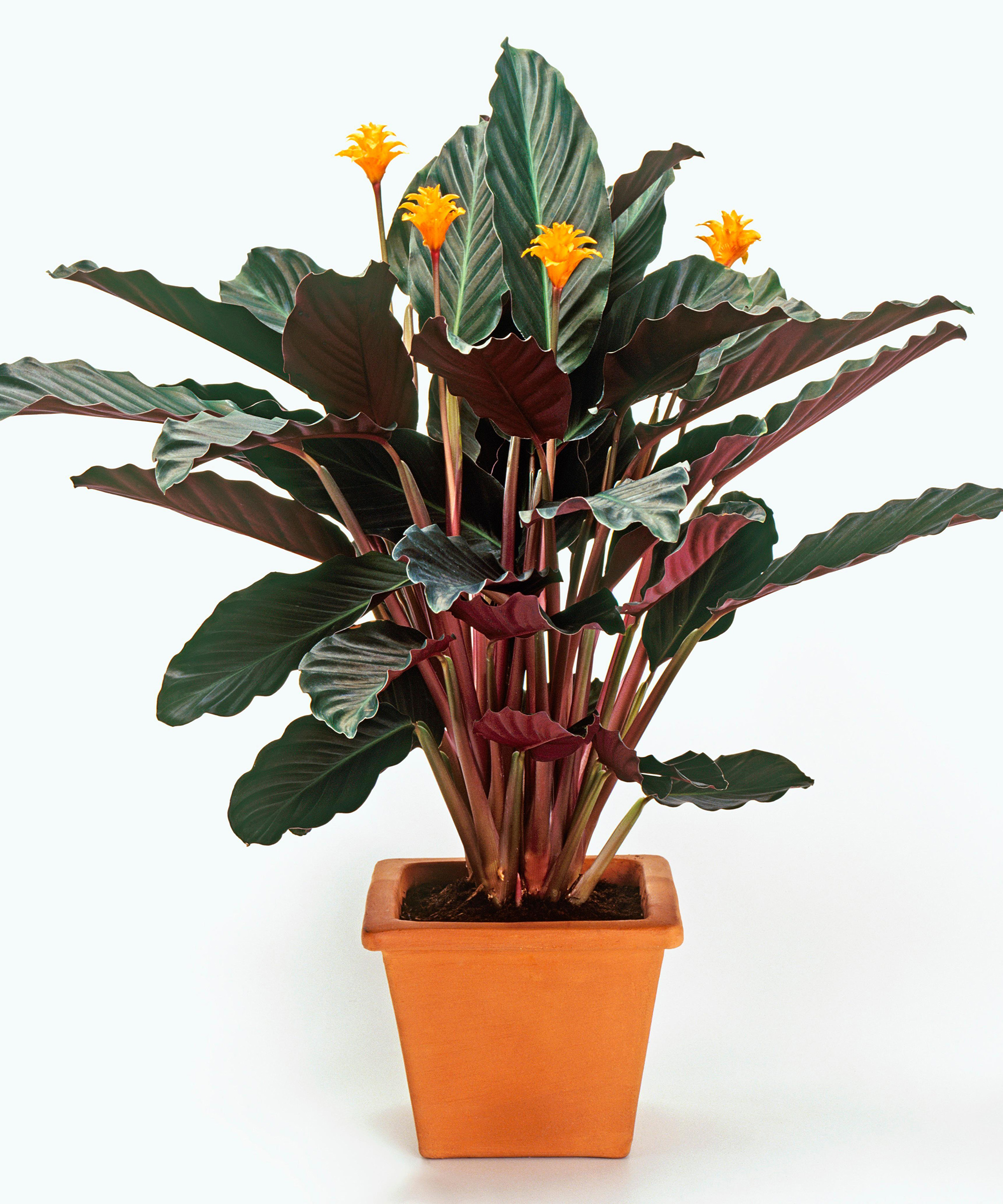
Bringing color into your kitchen through spring and summer, the eternal flame’s long-lasting torch-like orange flowers are matched with dark green ribbed leaves with a metallic sheen and burgundy undersides. It will reach about 2ft (60cm) in height and spread, and demands a bright spot, out of direct sun, and high humidity levels – mist the leaves every few days to maintain the right conditions.
Keep the compost moist, but take care not to overwater your plant, which can lead to stem rot: make sure it’s in a pot with drainage holes and allow excess water to drain away over a sink before returning it to a waterproof container. Feed with balanced liquid fertilizer once a month from spring to early fall.
10. Peacock plant (Goeppertia makoyana; syn. Calathea makoyana)
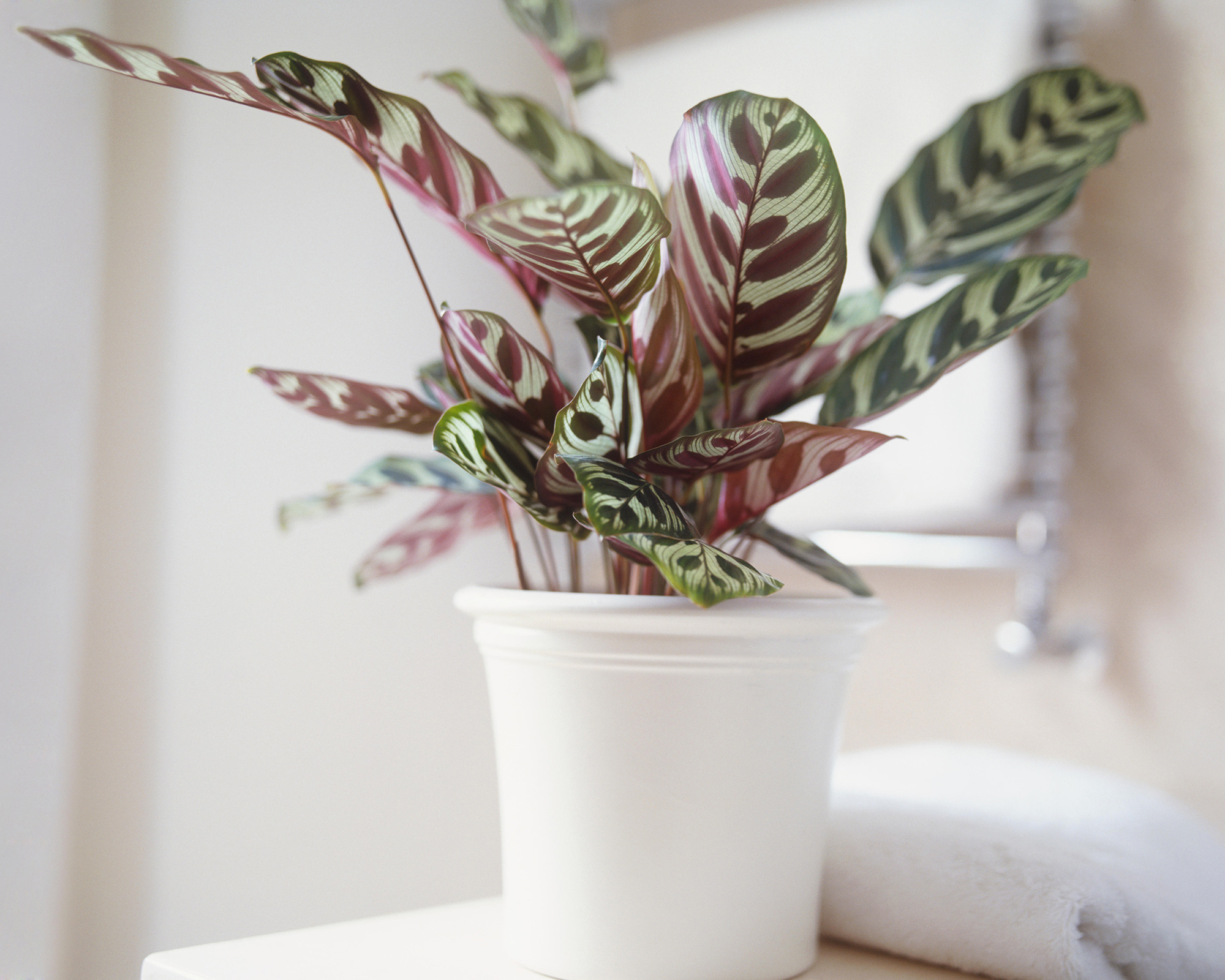
It’s hard to resist the beautiful foliage of the aptly named peacock plant. The large paddle-shaped silvery green leaves are decorated with bold dark green markings on top, and burgundy on the undersides, creating a stunning focal point. However, like a strutting peacock, this plant will only perform when the conditions are right.
To thrive, it requires high humidity levels, and while basking in the steamy atmosphere of a kitchen, it will still demand further misting with tepid water every few days. Use distilled or rainwater to keep the compost moist from spring to autumn and reduce watering in winter. Feed with a half-strength balanced liquid fertilizer once a fortnight from spring to fall.
11. Prayer plant (Maranta leuconeura var. leuconeura 'Fascinator')
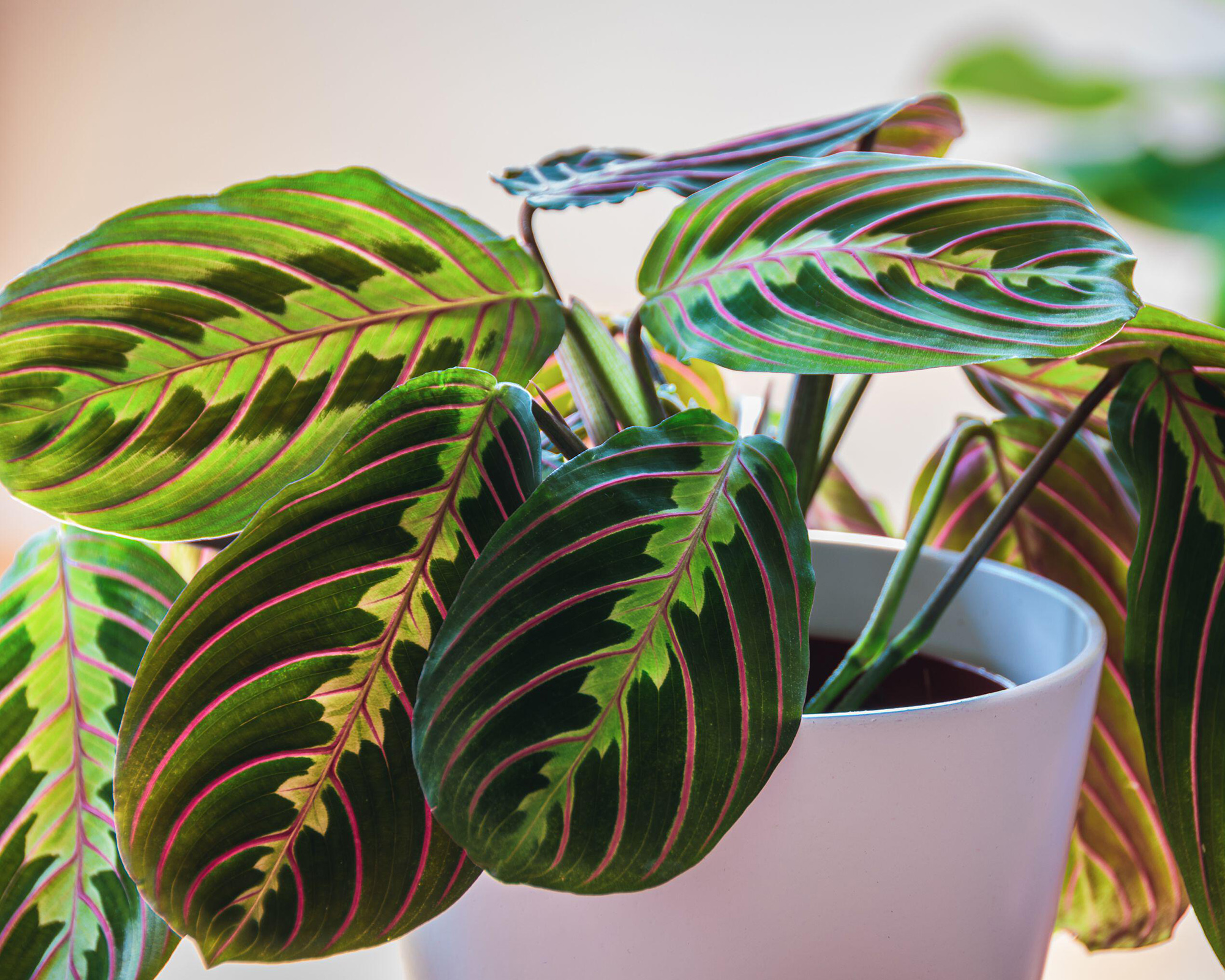
Grown for its exotic foliage, prayer plant leaves look like they’ve been decorated by a skilled artist, with pink veins overlaying dark and apple green markings, and purple or grey-green coloring on the undersides. The foliage folds up at night, hence the name, and the stems can start to trail as the plant matures, so keep it in an elevated position such as on plant stand or in a hanging basket.
The prayer plant is surprisingly easy to care for, and will thrive in the humid atmosphere in a kitchen, if you can also offer it a bright position out of direct sunlight. Keep the compost moist from spring to fall, and apply a half-strength balanced liquid fertilizer every fortnight during the same period. Reduce watering in winter.
12. Radiator plant (Peperomia caperata)
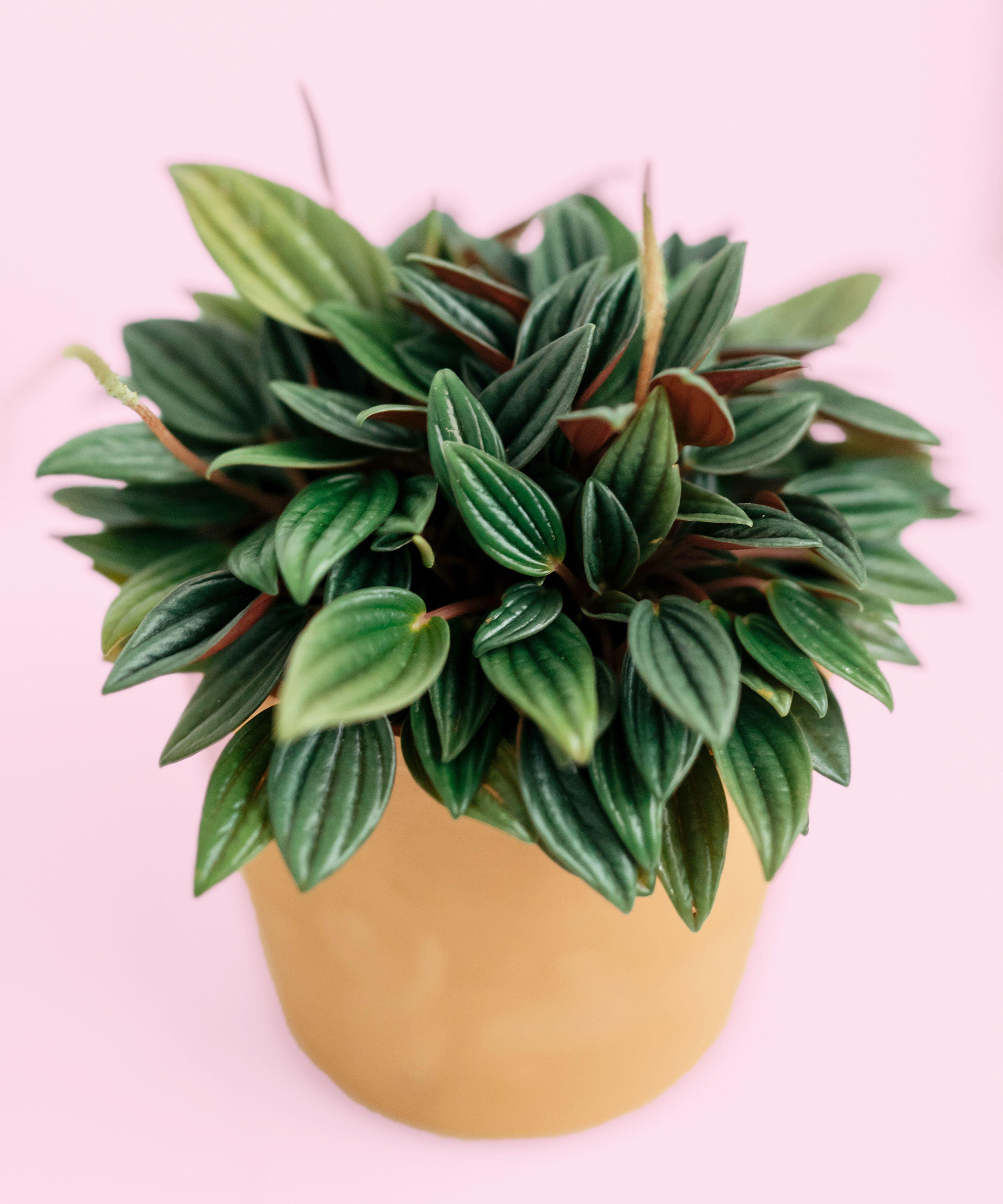
Named after the corrugated texture of its small heart-shaped green or red leaves, the radiator plant is happiest in a humid room such as a kitchen. In summer, this compact plant also produces unusual long cream flowerheads that resemble mouse tails, and it’s small enough to fit on a lightly shaded windowsill or shelf, reaching just 10in (25cm) in height and spread when mature.
Very easy to care for, simply water your plant from spring to fall when the top of the compost feels dry and reduce watering even further in winter so that the soil almost dries out. Apply a half-strength balanced liquid fertilizer once a month from spring to fall.
13. Fishbone cactus (Epiphyllum anguliger)
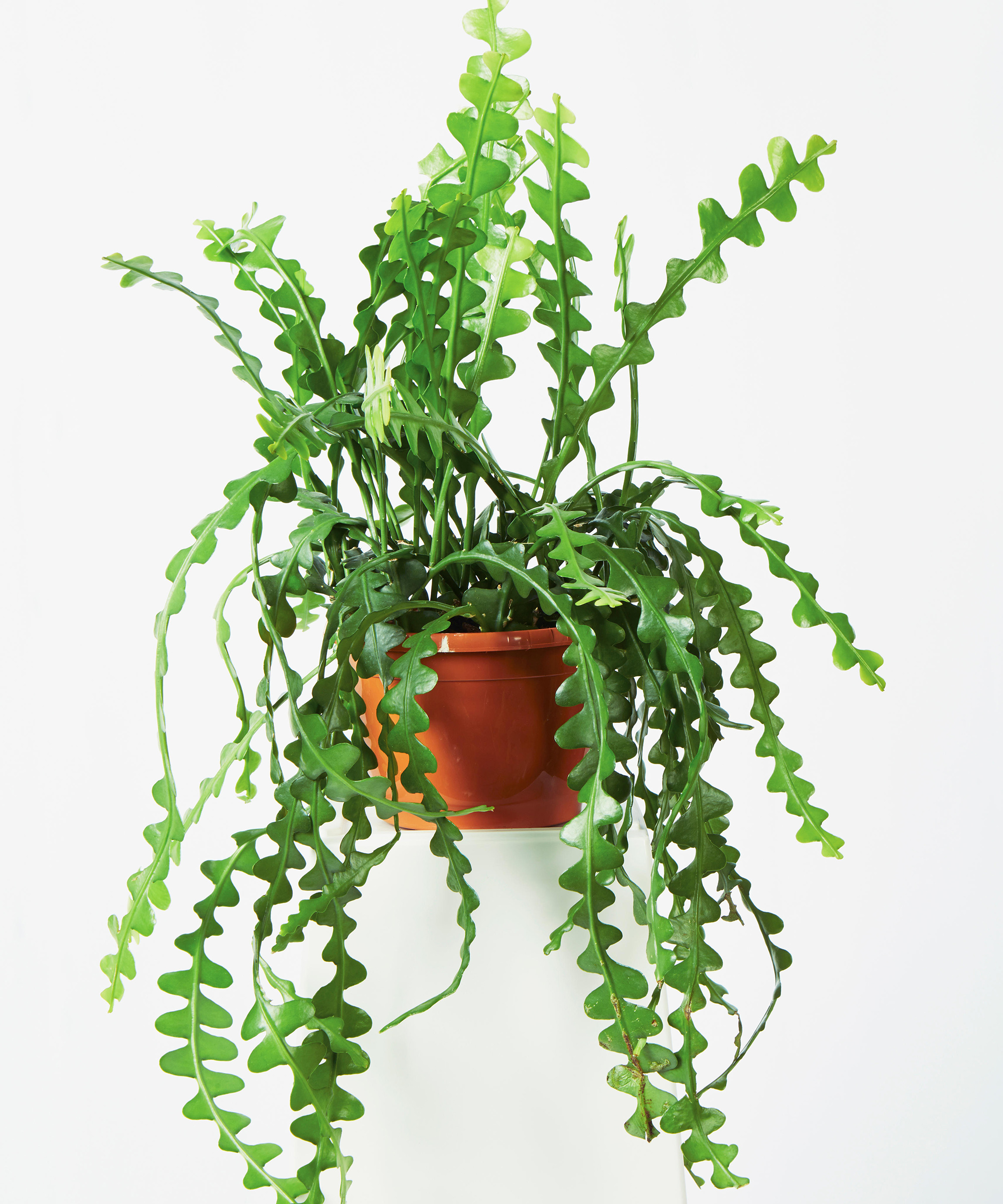
Unlike desert cacti, this trailing type lives in tropical forests where it clings to the branches of trees, which is why it likes both humidity and a position in filtered sun or light shade. Perfect for a kitchen, its wavy-edged green leaves, which resemble fish bones, will create an eye-catching feature trailing down from a hanging basket.
It also produces fragrant yellow and white flowers in summer or early autumn. This cactus may need additional misting if it starts to flag, but take care not to overwater it, which can cause the leaves to rot.
Plant it in a pot with drainage holes and only water when the top of the compost feels dry, removing it from its basket and watering over a sink, then leaving it to drain fully before replacing it. Apply a half-strength high-potash liquid fertilizer, such as a tomato fertilizer, every two weeks when the flower buds start to form and until they open.
Can you place plants in kitchens?
The simple answer is ‘yes’, especially those that enjoy moderate or high humidity levels. However, Paul Thomas, owner and director of House of Plants warns that not all kitchens offer identical conditions and other factors will influence the long-term health of your kitchen plants.
He says: 'Those adapted to thrive on a forest floor or in the tree canopies, such as the radiator plant (Peperomia ‘Rosso’) or moth orchid (Phalaenopsis), will not be happy standing under a sky light that blasts it with hot, direct sunlight, especially in summer. Equally, a plant that likes a brightly lit position such as a croton (Codiaeum) or fishbone cactus (Epiphyllum anguliger) is unlikely to thrive in a gloomy basement kitchen.' For spaces like this with limited natural light, you might want to consider choosing one of the best low light indoor plants instead.
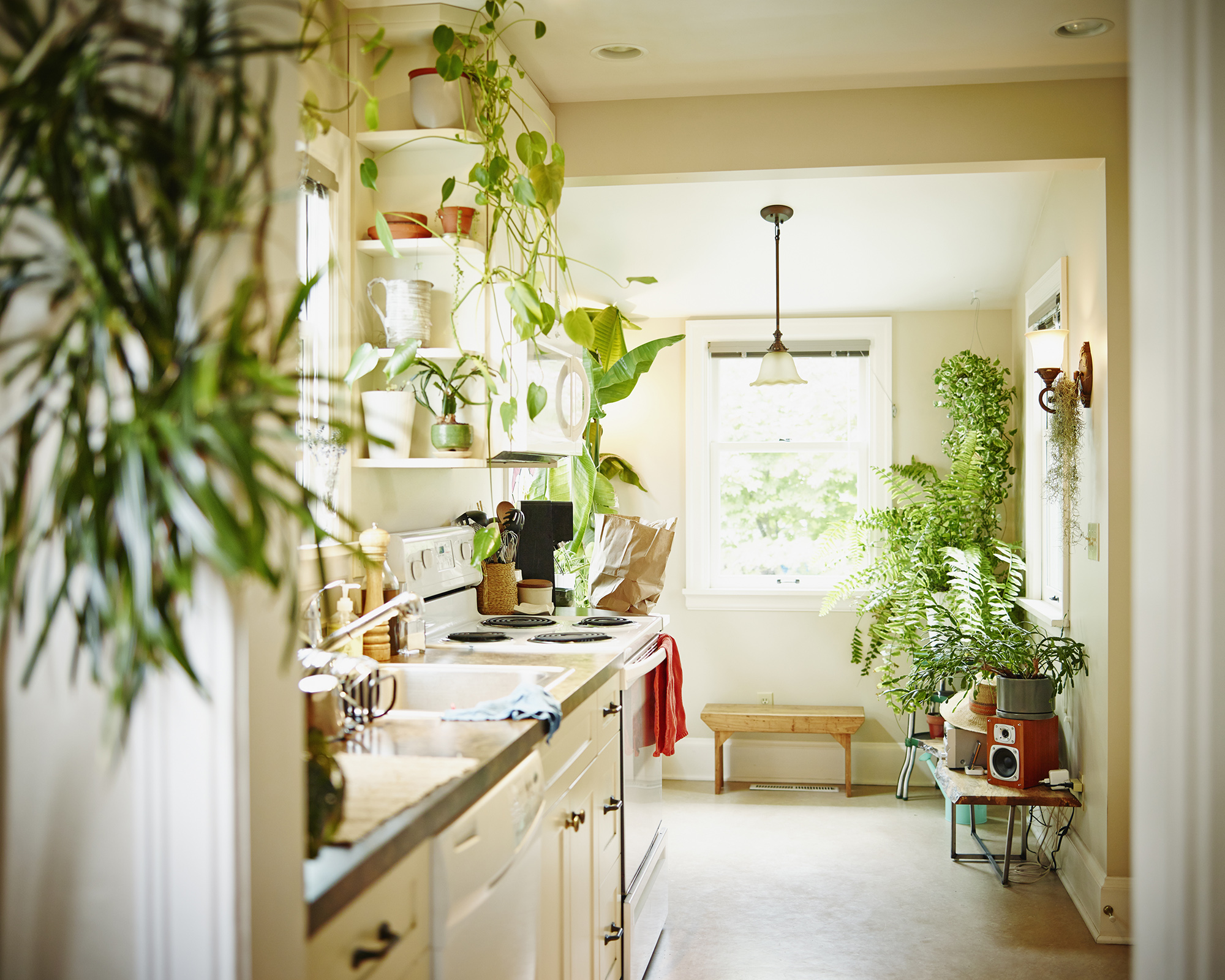
Which plants are good for kitchens?
Ferns and many foliage plants with glossy or patterned leaves enjoy the humidity in a kitchen, as long as you can offer them a lightly shaded spot away from direct sunlight.
Some tropical plants, including orchids and African violets, will also be happy here, but if the temperature fluctuates – for example, if your heating in winter only comes on in the mornings and evenings – select one of the easier plants in our list. Also avoid desert cacti and succulents which are adapted to a drier atmosphere.
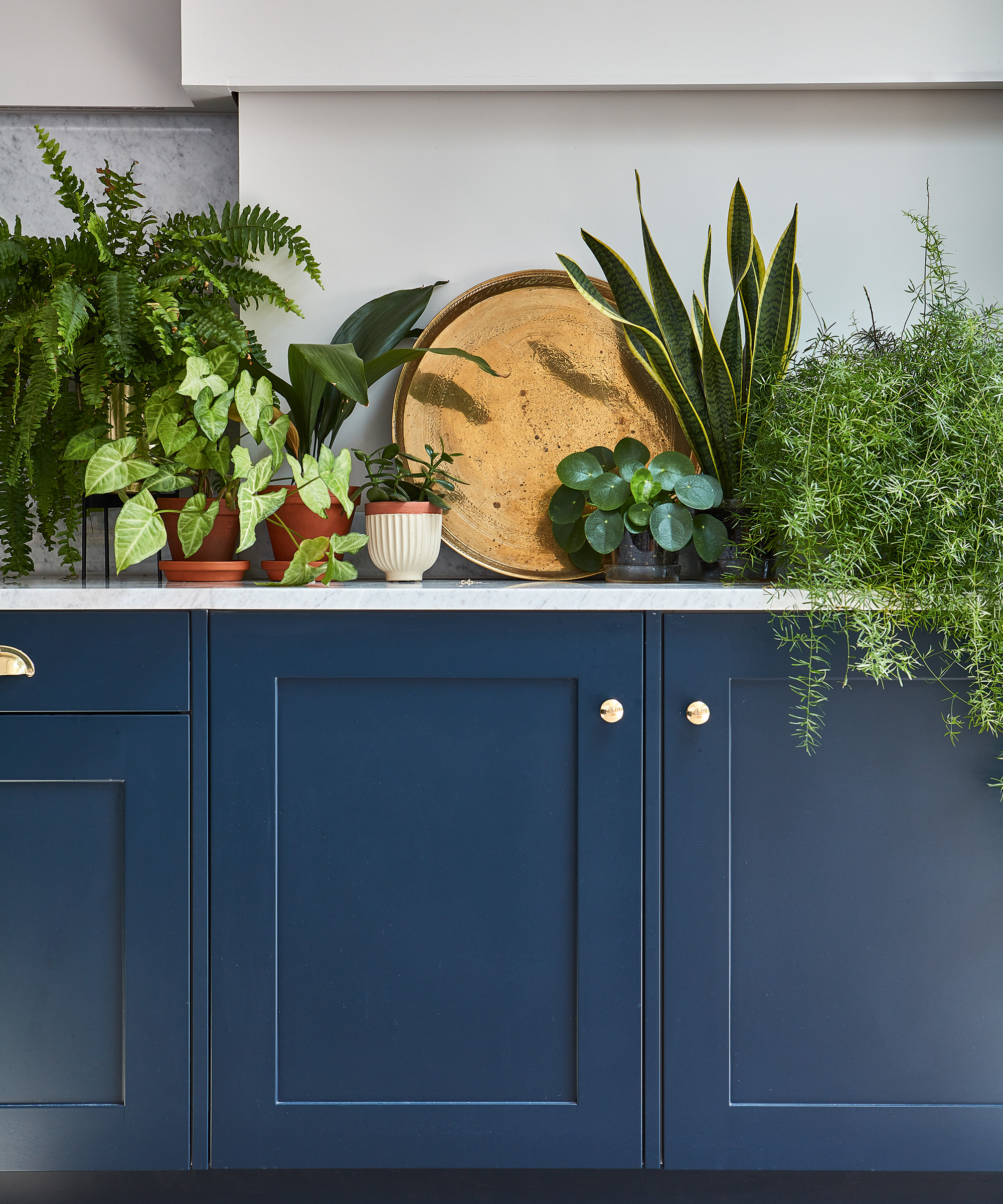
Is aloe vera good for kitchens?
In some ways, having an aloe vera close to hand in the kitchen may seem like a great idea, since the gel inside the leaves can help to soothe burns, which are most likely to occur when cooking. However, it is a succulent and, as such, needs a brightly lit position and low atmospheric humidity, so it may be better placed in an adjoining room that offers those conditions.
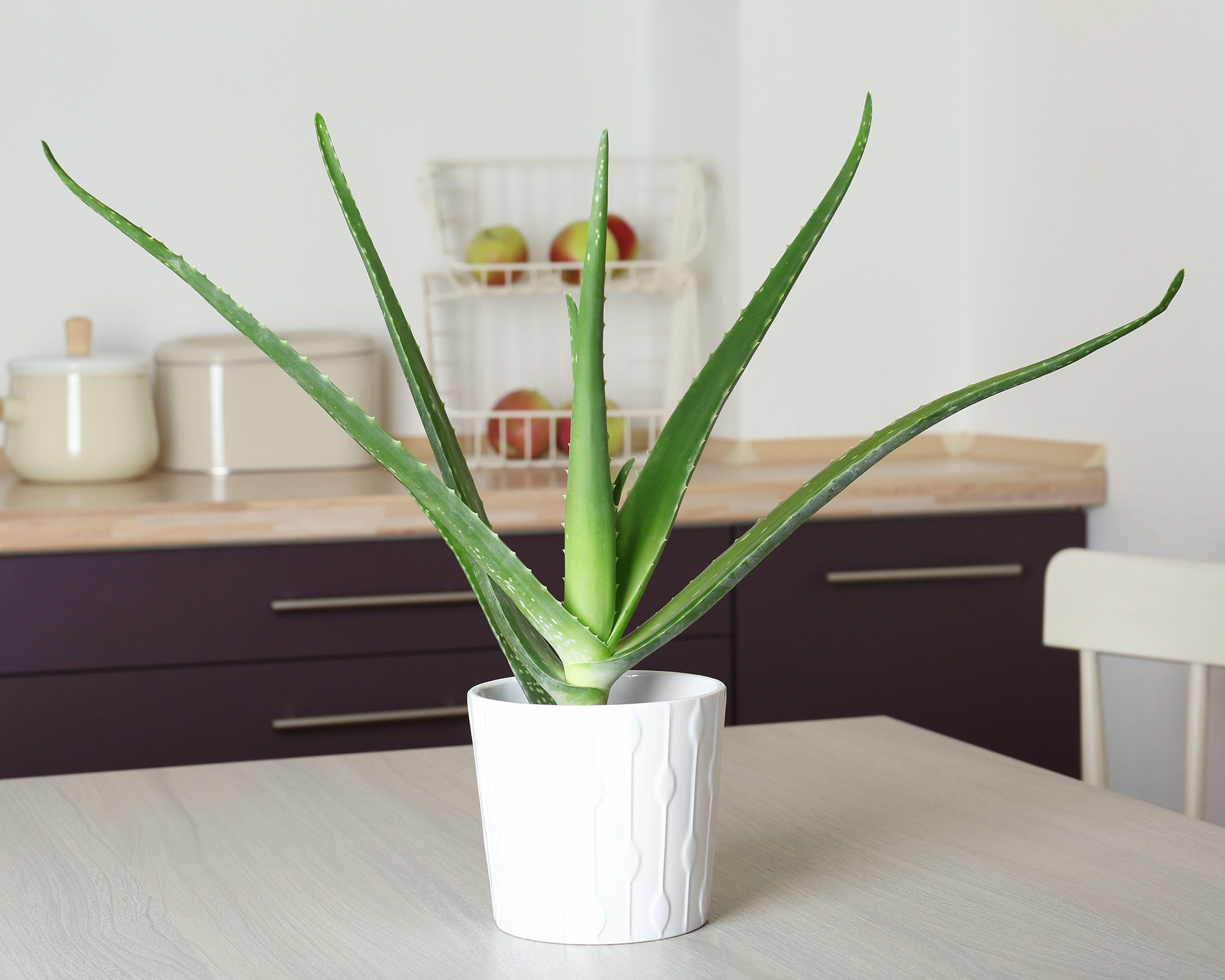

Zia Allaway is a garden book author, editor, and journalist, and writes for a range of gardening and women’s magazines, including Easy Gardens, Homes & Gardens and Livingetc, as well as The Guardian and The Daily Telegraph newspapers. She has also written books for the Royal Horticultural Society and Dorling Kindersley publishers, including Eco-Gardening, Compost, Low Maintenance, Practical House Plant Book, Practical Cactus & Succulent Book, Indoor Edible Garden, What Plant Where, and the Encyclopedia of Plants and Flowers.
